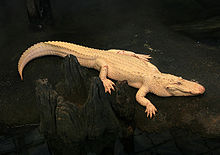
Back Portaal:Biologie Afrikaans بوابة:علم الأحياء Arabic قيسارية:لبيولوجيا ARY Portal:Biologiya Azerbaijani پوْرتال:بیوْلوْژی AZB Партал:Біялогія Byelorussian Портал:Биология Bulgarian প্রবেশদ্বার:জীববিজ্ঞান Bengali/Bangla Portal:Biologija BS Portal:Biologia Catalan
Introduction


Biology is the scientific study of life. It is a natural science with a broad scope but has several unifying themes that tie it together as a single, coherent field. For instance, all organisms are made up of cells that process hereditary information encoded in genes, which can be transmitted to future generations. Another major theme is evolution, which explains the unity and diversity of life. Energy processing is also important to life as it allows organisms to move, grow, and reproduce. Finally, all organisms are able to regulate their own internal environments.
Biologists are able to study life at multiple levels of organization, from the molecular biology of a cell to the anatomy and physiology of plants and animals, and evolution of populations. Hence, there are multiple subdisciplines within biology, each defined by the nature of their research questions and the tools that they use. Like other scientists, biologists use the scientific method to make observations, pose questions, generate hypotheses, perform experiments, and form conclusions about the world around them.
Life on Earth, which emerged more than 3.7 billion years ago, is immensely diverse. Biologists have sought to study and classify the various forms of life, from prokaryotic organisms such as archaea and bacteria to eukaryotic organisms such as protists, fungi, plants, and animals. These various organisms contribute to the biodiversity of an ecosystem, where they play specialized roles in the cycling of nutrients and energy through their biophysical environment. (Full article...)
Selected article -
Albinism is the congenital absence of melanin in an animal or plant resulting in white hair, feathers, scales and skin and reddish pink or blue eyes. Individuals with the condition are referred to as albinos.
Varied use and interpretation of the terms mean that written reports of albinistic animals can be difficult to verify. Albinism can reduce the survivability of an animal; for example, it has been suggested that albino alligators have an average survival span of only 24 hours due to the lack of protection from UV radiation and their lack of camouflage to avoid predators. It is a common misconception that all albino animals have characteristic pink or red eyes (resulting from the lack of pigment in the iris allowing the blood vessels of the retina to be visible); this is not the case for some forms of albinism. Familiar albino animals include in-bred strains of laboratory animals (rats, mice and rabbits), but populations of naturally occurring albino animals exist in the wild, e.g., Mexican cave tetra. Albinism is a well-recognized phenomenon in molluscs, both in the shell and in the soft parts. It has been claimed by some e.g., that albinism can occur for a number of reasons aside from inheritance, including genetic mutations, diet, living conditions, age, disease, or injury. However, this is contrary to definitions where the condition is inherited. (Full article...)Selected picture -

Major topics
Selected biography -
Cyril Dean Darlington FRS (19 December 1903 – 26 March 1981) was an English biologist, cytologist, geneticist, and eugenicist. He discovered the mechanics of chromosomal crossover, its role in inheritance; and thus its importance to evolution. He was the Sherardian Professor of Botany at the University of Oxford from 1953 to 1971.
Darlington's research on genetics contributed to the modern evolutionary synthesis in the 20th century. However, many of his views are controversial; Darlington was listed in 1999 by the Southern Poverty Law Center as an example of a prominent race scientist who espoused antisemitism, eugenics, racism, and social Darwinism. (Full article...)General images -
Did you know -

- ... that the p19 protein (dimer pictured) evolved in an arms race between plants and viruses?
- ...that there are about a million nephrons in a human kidney?
- ... that the semi-aquatic grasshopper Cornops aquaticum is being trialled in South Africa as a biological control agent for the invasive water hyacinth?
Things you can do
Related portals
Biology portals
Categories

Anatomy - Anthropology - Astrobiology - Biochemistry - Bioengineering - Bioinformatics - Biotechnology - Botany - Cell biology - Conservation biology - Developmental biology - Ecology - Environmental science - Evolutionary biology - Genetics - Mathematical biology - Medicine - Microbiology - Immunology - Molecular biology - Mycology - Neuroscience - Paleontology - Palynology Parasitology - Pharmacology -
Phylogenetics - Physiology - Systems biology - Taxonomy - Toxicology - Virology - ZoologyMore topics
WikiProjects

WikiProjects connected with biology:
A complete list of scientific WikiProjects can be found here. See also Wikispecies, a Wikimedia project dedicated to classification of biological species.
Associated Wikimedia
The following Wikimedia Foundation sister projects provide more on this subject:
-
Commons
Free media repository -
Wikibooks
Free textbooks and manuals -
Wikidata
Free knowledge base -
Wikinews
Free-content news -
Wikiquote
Collection of quotations -
Wikisource
Free-content library -
Wikiversity
Free learning tools -
Wiktionary
Dictionary and thesaurus
© MMXXIII Rich X Search. We shall prevail. All rights reserved. Rich X Search

























































